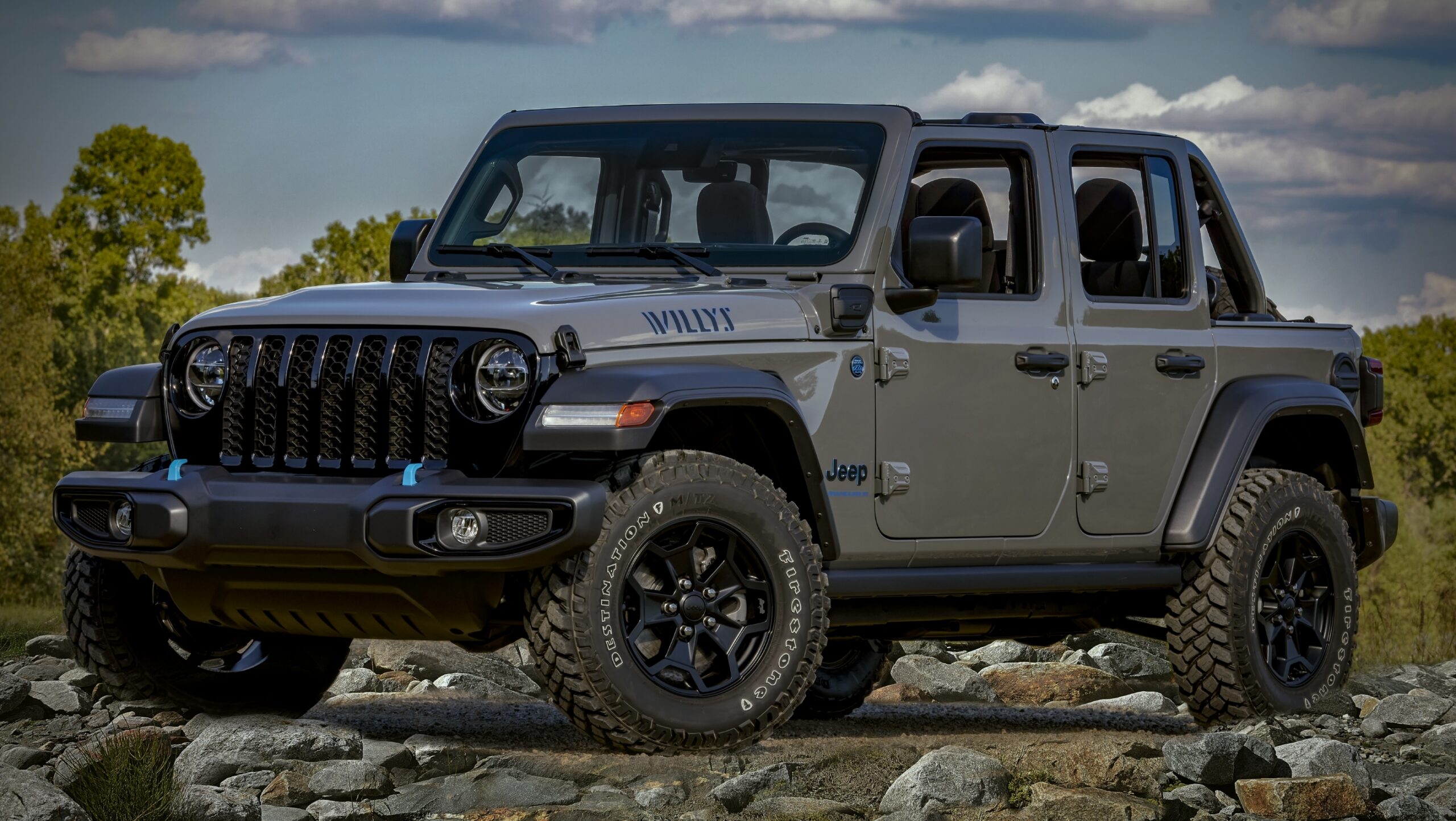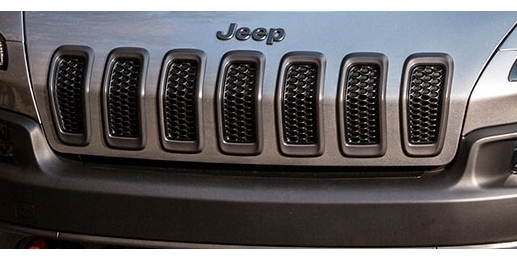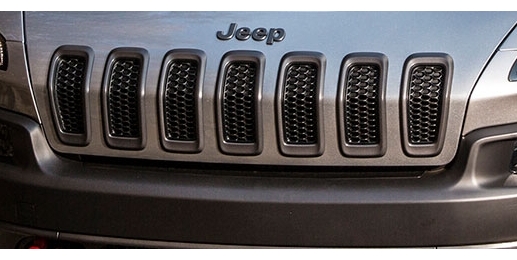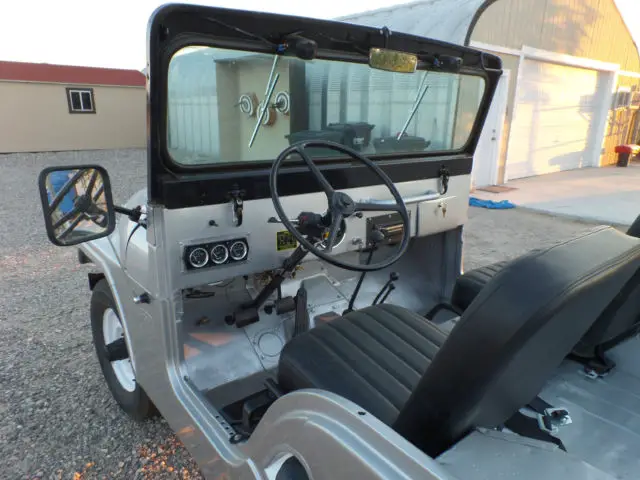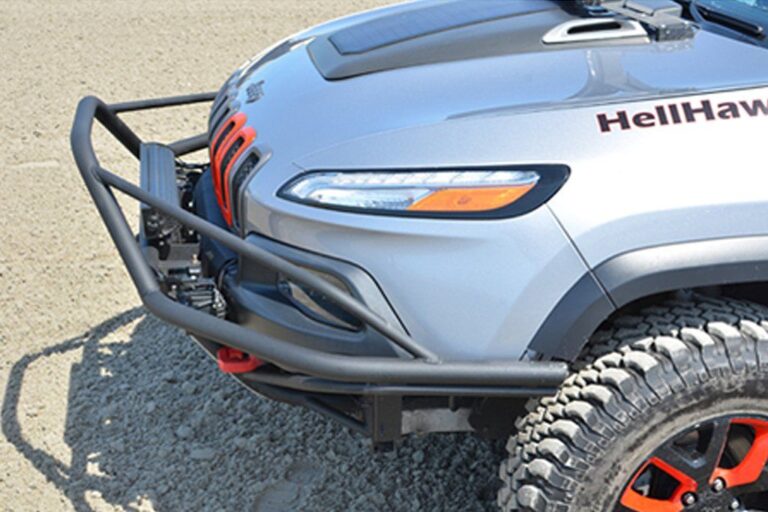Jeep Truck Kit For Sale: Transforming Your Wrangler into the Ultimate Utility Machine
Jeep Truck Kit For Sale: Transforming Your Wrangler into the Ultimate Utility Machine jeeps.truckstrend.com
The allure of the Jeep Wrangler is undeniable: its iconic design, unparalleled off-road capability, and the freedom of open-air driving. Yet, for many enthusiasts, one crucial element has often been missing – the practical utility of a pickup truck bed. While Jeep reintroduced a factory truck with the Gladiator, a vibrant aftermarket industry has long provided a compelling alternative: the Jeep truck conversion kit. These kits offer a unique opportunity to transform an existing Wrangler into a custom, one-of-a-kind pickup, blending the best of both worlds.
A Jeep truck kit, at its core, is a specialized aftermarket package designed to convert a Jeep Wrangler (most commonly the JK/JLU generations) from an SUV body style into a functional pickup truck. This transformation typically involves removing the rear section of the Wrangler’s body and replacing it with a new, open bed and often a modified cab. The result is a vehicle that retains the Wrangler’s legendary off-road prowess and distinctive aesthetics, but gains the significant utility of a truck bed, making it ideal for hauling gear, tools, camping equipment, or simply standing out from the crowd.
Jeep Truck Kit For Sale: Transforming Your Wrangler into the Ultimate Utility Machine
The demand for such conversions stems from a long history of Jeep trucks, from the classic Scrambler (CJ-8) to the Comanches and the more recent Gladiator. For those who already own a Wrangler, or prefer the specific characteristics of an older model, a conversion kit offers a path to truck ownership without the expense of a new vehicle, while also allowing for extensive customization that factory models simply can’t match.
What Exactly is a Jeep Truck Kit?
A Jeep truck kit is more than just adding a bed to the back of a Wrangler. It’s a comprehensive modification that can range from a relatively simple chop-and-add to an extensive frame-stretching overhaul.
- The Concept: At its most basic, a kit involves removing the rear body tub, rear seats, and often the roll cage of a donor Wrangler. A new rear bulkhead (the back wall of the new cab) is installed, and a pickup bed is integrated behind it.
- Donor Vehicles: While kits exist for older CJs and TJs, the vast majority of modern kits are designed for the Jeep Wrangler JK (2007-2018) and JL (2018-present) models, both 2-door and 4-door variants. The 4-door JK/JLU models are particularly popular for conversions as they offer a longer wheelbase, which can result in a more proportionate and practical bed length.
- Key Components: A typical kit includes a new rear bulkhead, bed sides, a tailgate (or provisions for using a stock tailgate), wheel wells, and often new internal structure for the bed. More advanced kits might include frame extension components, new fuel tank relocation kits, and even custom hardtops or soft tops designed for the new cab configuration.

Why Choose a Jeep Truck Kit? Benefits and Appeal
The decision to convert a Wrangler into a truck is driven by a unique blend of practical benefits and personal preferences.
- Unique Aesthetics and Individuality: A converted Jeep truck is an immediate head-turner. It stands out from both stock Wranglers and traditional pickups, offering a distinctive, rugged, and highly customized look. It’s a statement piece that reflects the owner’s personality and ingenuity.
- Increased Utility and Versatility: The primary functional benefit is the open bed. This transforms the Wrangler from a passenger/light cargo SUV into a capable hauler. Whether it’s for camping gear, mountain bikes, building materials, or just dirty recovery equipment, the bed offers practical space that’s easy to load and unload.
- Retained Off-Road Prowess: Unlike buying a completely different truck, a Jeep conversion retains the core capabilities that make Wranglers legendary off-roaders. With proper design, the approach, departure, and breakover angles can remain excellent, and the vehicle benefits from the Wrangler’s robust axles, suspension, and transfer case.
- Customization Potential: The conversion itself is a form of extreme customization. Beyond the kit, owners often integrate custom bumpers, winches, roof racks, and unique paint schemes, creating a truly bespoke vehicle.
- Cost-Effectiveness (Potentially): For those who already own a suitable Wrangler, a conversion kit can be significantly cheaper than buying a brand-new Jeep Gladiator or another full-size pickup, especially if the owner has the skills to perform some or all of the installation themselves.
- DIY Satisfaction: For the mechanically inclined, building a Jeep truck from a kit offers immense satisfaction. It’s a challenging but rewarding project that culminates in a vehicle built with your own hands.


Types of Jeep Truck Kits Available
The aftermarket offers a variety of kits, each with different approaches to the conversion, catering to various skill levels, budgets, and desired outcomes.
- Full Frame-Stretch Kits: These are the most involved and typically result in the most professional-looking, factory-like conversions. Brands like AEV (American Expedition Vehicles) with their classic Brute kit (for JK Wranglers, now discontinued but still a benchmark) or some bespoke fabricators offer kits that require cutting and extending the Wrangler’s frame. This allows for a longer, more functional bed and a more balanced vehicle appearance. These kits are often comprehensive, including new body panels, a redesigned hardtop, and even fuel tank relocation solutions.
- "Chop Top" or Short Bed Kits: These kits are less invasive, often designed for 4-door Wranglers where the rear body is simply cut behind the rear seats, and a new bulkhead and short bed are installed. The frame is generally not extended. These kits offer a quicker, less complex installation, and are often more budget-friendly. GR8TOPS is a well-known manufacturer in this category, offering hardtops and bed kits that convert 4-door JKs into a two-door pickup with a short bed.
- "Gladiator Style" Conversions: With the popularity of the modern Jeep Gladiator (JT), some kits have emerged that aim to give older JK/JLU Wranglers the aesthetic of the JT. These might involve more significant bodywork to mimic the Gladiator’s unique styling cues while adding a bed.
- Material Differences: Kits are typically made from fiberglass, steel, or a combination. Fiberglass kits are lighter and often easier to shape but can be more fragile. Steel kits are more robust and durable but add more weight and may require more advanced welding and fabrication skills for installation.
Key Considerations Before Buying a Kit
Embarking on a Jeep truck conversion is a significant undertaking. Careful planning and understanding the implications are crucial.
- Donor Vehicle Selection: The condition of your donor Wrangler is paramount. A rust-free frame, solid drivetrain, and reliable engine are essential. Consider mileage and maintenance history. For newer Wranglers, understand the impact on your warranty.
- Budget Beyond the Kit: The kit price is just the beginning. Factor in professional installation costs (if not DIY), paint and bodywork, potential suspension upgrades (to handle the new weight distribution), new tires/wheels, and unforeseen issues. This is not a cheap project.
- Skill Level and Tools Required: Full conversions often require advanced fabrication skills, including welding, cutting, grinding, and complex wiring. If you’re not proficient in these areas, professional installation is highly recommended. Ensure you have access to a well-equipped shop or sufficient space and tools if attempting DIY.
- Legalities and Registration: This is perhaps the most critical consideration. Vehicle modification laws vary significantly by state and country. You may need to have the vehicle inspected, re-registered, or even re-titled as a different vehicle type. Some jurisdictions may have strict rules regarding frame modifications or altered VINs. Always check local regulations before starting the project.
- Resale Value: A professionally done, high-quality conversion can retain good value, especially if it’s a sought-after kit like the AEV Brute. However, a poorly executed DIY conversion can significantly diminish the vehicle’s resale value and even make it difficult to sell.
- Impact on Driving Dynamics: Adding a bed and potentially stretching the wheelbase will change the vehicle’s weight distribution, center of gravity, and overall length. This can affect handling, braking, and off-road articulation. Suspension upgrades are often necessary to compensate for the added weight and maintain ride quality.
The Installation Process: A Brief Guide
While specific steps vary by kit, the general process involves several key stages.
- Planning and Preparation: Thoroughly read the kit instructions. Gather all necessary tools, safety gear, and ensure you have a clean, level workspace.
- Disassembly: Remove the hardtop/soft top, rear doors (on 4-door models), rear seats, interior trim, and the entire rear body tub of the Wrangler. This often involves disconnecting wiring harnesses, fuel lines, and brake lines.
- Frame Modification (if applicable): For frame-stretch kits, this involves precisely cutting the frame rails and welding in the extension pieces. This step requires precision, strong welding skills, and careful alignment to ensure structural integrity.
- Cab Modification: Install the new rear bulkhead, sealing it off from the elements. This may involve cutting the roll cage and integrating new support structures.
- Bed Mounting: Position and securely mount the new pickup bed to the frame. This involves drilling, bolting, and often welding. Ensure proper alignment with the cab.
- Wiring and Plumbing: Extend or reroute wiring for taillights, fuel pump, and any other rear-mounted components. Modify or extend fuel lines as needed.
- Finishing Touches: Prepare the body for paint, addressing any imperfections or gaps. Apply primer and paint to match or contrast with the existing vehicle. Reinstall interior components, and add any desired accessories like bed liners, tonneau covers, or custom bumpers.
- Inspection and Testing: After assembly, perform thorough checks of all systems, especially brakes, lights, and fuel. Consider a professional inspection to ensure safety and compliance.
Tips for a Successful Jeep Truck Kit Project
- Do Your Research Thoroughly: Before buying, research different kits, read reviews, watch installation videos, and join online forums. Learn from others’ experiences.
- Choose the Right Kit for Your Skills: Be realistic about your mechanical abilities. If you’re not a seasoned fabricator, opt for a less complex kit or budget for professional installation.
- Don’t Cut Corners on Safety: Especially when dealing with frame modifications, welding, and structural components. Safety should be your absolute priority.
- Plan for Hidden Costs: Paint, unexpected parts, specialized tools, and potential issues with old components can quickly add up.
- Seek Expert Advice: Engage with the community on forums, ask experienced fabricators for guidance, and don’t hesitate to consult professionals for critical steps like welding or electrical work.
- Document Everything: Take photos and notes throughout the process. This is invaluable for troubleshooting, future maintenance, and potentially for registration purposes.
Potential Challenges and Solutions
- Rust/Corrosion: Older donor Wranglers might have hidden rust. Address all rust thoroughly before starting, and apply rust-preventative coatings to new metalwork.
- Alignment Issues: Ensuring the new bed aligns perfectly with the cab can be tricky. Take precise measurements and use jigs if necessary.
- Electrical Gremlins: Modern Jeeps have complex CAN-BUS systems. Proper wiring extensions and connections are crucial to avoid dashboard warning lights or system malfunctions. Consult wiring diagrams carefully.
- Weight and Suspension: The added weight of the bed and modifications can cause the rear suspension to sag. Plan for upgraded coil springs, shocks, and potentially heavier-duty sway bars or airbags.
- Legal Hurdles: Navigating DMV requirements can be frustrating. Be prepared with all documentation, receipts, and potentially even photos of the conversion process. Some states may require a certified mechanic’s sign-off.
Price Table for Jeep Truck Kits (Estimates)
Please note: These prices are estimates and can vary wildly based on the manufacturer, materials, features included, and current market conditions. They do not include the cost of the donor vehicle, paint, professional labor, or potential ancillary upgrades (suspension, tires, etc.).
| Kit Type / Manufacturer Example | Key Features | Estimated Kit Price (USD) | Estimated DIY Total Project Cost (USD) | Estimated Professional Install Total Project Cost (USD) |
|---|---|---|---|---|
| Short Bed / "Chop" Kit | Fiberglass or steel bed, rear bulkhead, basic mounting hardware. No frame stretch. | $3,000 – $8,000 | $5,000 – $15,000 | $15,000 – $30,000+ |
| (e.g., GR8TOPS, some generic) | Ideal for 4-door JK/JL. | (Incl. paint, minor parts) | (Incl. kit, paint, labor, minor parts) | |
| Frame-Stretch Kit | Comprehensive steel/fiberglass kit, frame extension components, new top, fuel tank relocation. | $10,000 – $25,000 | $20,000 – $40,000+ | $35,000 – $60,000+ |
| (e.g., Discontinued AEV Brute, | More involved installation, professional finish. | (Incl. paint, significant parts) | (Incl. kit, paint, labor, significant parts) | |
| bespoke fabricators) | ||||
| Gladiator-Style Body Kit | Full body panels to mimic JT Gladiator, may or may not include frame stretch. | $8,000 – $18,000 | $15,000 – $35,000+ | $25,000 – $50,000+ |
| (Various aftermarket brands) | Aesthetics-focused, often requires extensive bodywork. | (Incl. paint, body shop labor) | (Incl. kit, paint, labor, body shop) |
Disclaimer: These figures are highly generalized. The final cost will depend heavily on the specific kit, the condition of your donor vehicle, the extent of additional modifications, and whether you perform the work yourself or hire professionals. Always obtain detailed quotes from kit manufacturers and installers.
Frequently Asked Questions (FAQ)
Q1: Is a Jeep truck conversion kit street legal?
A1: This is highly dependent on your local laws (state, province, or country). Frame modifications, altered VINs, and changes to vehicle type can all affect legality. Always research and confirm with your local Department of Motor Vehicles (DMV) or equivalent authority before starting the project. Many successful conversions are street legal, but proper documentation and inspection are crucial.
Q2: How long does a Jeep truck kit installation take?
A2: For a skilled DIY enthusiast, a "chop top" kit might take a few weeks to a couple of months of dedicated weekend work. A full frame-stretch kit can take several months, or even longer. Professional installations are typically faster, ranging from 4-12 weeks depending on the shop’s schedule and the kit’s complexity.
Q3: Can I install a Jeep truck kit myself?
A3: It depends on your mechanical aptitude and available tools. Basic "chop" kits might be manageable for an experienced home mechanic with welding skills. Full frame-stretch kits are much more complex and often require professional fabrication skills, specialized equipment, and a deep understanding of vehicle engineering.
Q4: Does installing a kit void my Jeep’s warranty?
A4: Yes, almost certainly. Any significant aftermarket modification like a truck conversion will void the factory warranty on affected components, and potentially the entire vehicle, especially if frame cutting or major electrical work is involved.
Q5: What is the resale value of a converted Jeep truck?
A5: Resale value can vary greatly. A high-quality, professionally installed conversion using a reputable kit (like the AEV Brute, for example) can command a premium. However, a poorly executed or unknown kit can significantly reduce the vehicle’s value and make it harder to sell. It’s often a niche market.
Q6: Which Jeep Wrangler models are compatible with truck kits?
A6: Most modern kits are designed for the Jeep Wrangler JK (2007-2018) and JL (2018-present) models, both 2-door and 4-door versions. Some older kits exist for CJ and TJ Wranglers, but they are less common in the current market.
Q7: What tools will I need for a DIY installation?
A7: Essential tools often include a welder, angle grinder, cutting tools (plasma cutter or reciprocating saw), measuring tools, wrenches, sockets, a hydraulic jack, jack stands, and various hand tools. For electrical work, a multimeter and wiring tools are necessary. Some kits may require specialized jigs or alignment tools.
Conclusion
The "Jeep Truck Kit For Sale" market offers an exciting frontier for automotive enthusiasts and off-road adventurers alike. It’s a testament to the enduring appeal of the Jeep Wrangler and the desire for a vehicle that perfectly blends iconic style with practical utility. While the journey from SUV to truck is not without its challenges – demanding careful planning, significant investment, and often advanced skills – the reward is a truly unique, highly capable, and deeply personal vehicle.
Whether you dream of a custom overlanding rig, a versatile workhorse, or simply a standout showpiece, a Jeep truck conversion kit provides the blueprint. By thoroughly researching your options, understanding the commitment involved, and perhaps even enlisting professional help for critical stages, you can transform your Wrangler into the ultimate utility machine, ready to tackle any adventure the road (or lack thereof) throws your way. The satisfaction of driving a vehicle you’ve built, tailored precisely to your needs, is an experience few factory vehicles can match.

